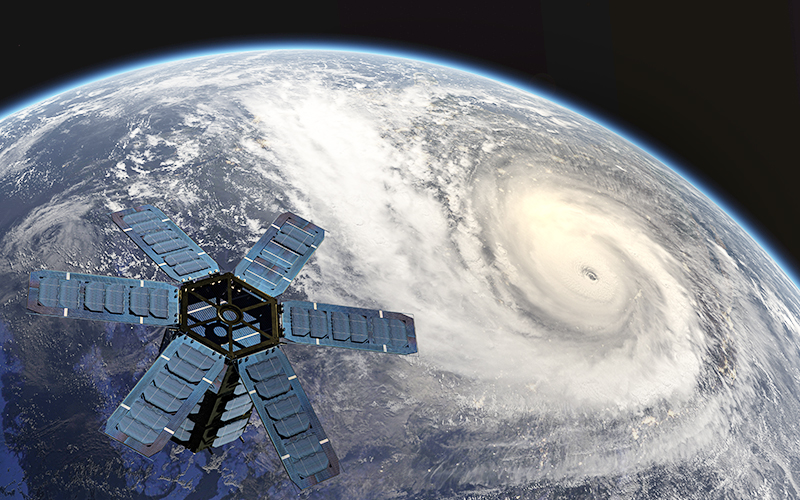When most people think of satellite communications, climate change isn’t usually front and center. It’s more common to associate satellite communications with delivering Internet connectivity to remote communities or supporting communications after a natural disaster. But space-based systems have an important role to play in efforts to not only understand and combat climate change but help the world reach net zero.
Earth is, after all, a planet and what better vantage point to monitor it from than from space? In fact, you could say that it was the ability to track atmospheric changes from space that got the world to take climate change seriously. Measurements taken in that late 1930s suggested that the Earth’s average temperature was rising, but these weren’t taken seriously until NASA’s Nimbus III, launched in 1969, first provided an accurate measurement of Earth’s atmospheric temperatures.
Of course, today there is a network of satellites collecting data on Earth’s climate system. The measurements are far more sophisticated than in 1969. The data recorded can be used in many different ways to reduce the strain on our shared environment and to protect people from the effects of climate change.
For example, access to high-speed, low latency, ubiquitous broadband connectivity helps some of the most energy intensive markets become greener through better efficiencies. Being connected at all times enables planes and ships to always take the most efficient routes possible, reducing fuel consumption and pollution. This kind of data digitalization and analysis is estimated to save up to 20-30 percent in shipping fuel consumption.
Satellites can also provide early-warning systems and mitigation strategies for people dealing with climate change. It’s been estimated that 1 in 6 Americans live in an area with a significant risk of wildfires. That number will rise to 1 in 5 by 2052.
Satellites can not only track visible evidence of fires and precisely direct fire fighters, but also trace gases such as carbon monoxide, methane and methanol. And by analyzing specific wavelengths of light that trees emit, satellites can measure the health of forests, aiding forest management.
Satellite technology also supports more efficient agriculture. Satellite data helps farmers use less fertilizer and chemicals to fight weeds and crop disease. GPS supports precision planting and allows famers to work in low-visibility conditions caused by fog or rain.
These types of Earth monitoring produce massive amounts of data. Telesat is working with NASA as a partner for its Communications Services Project (CSP). NASA plans to decommission its owned and operated Tracking and Data Relay Satellite (TDRS) system in the coming years, and the CSP will evaluate commercial SATCOM networks’ feasibility to reliably support future near-Earth missions. Under the agreement, Telesat Government Solutions will demonstrate future space-to-space relay capabilities with Telesat Lightspeed.
Telesat’s networks play a key environmental monitoring role across Canada today on its existing satellite fleet. Telesat Lightspeed will enable next-generation Earth observation and emissions tracking technologies across the entire world, including the vital arctic and ocean regions.
New satellite technology will continue to shine a light on the effects of climate change and help preserve our planet for generations to come.



